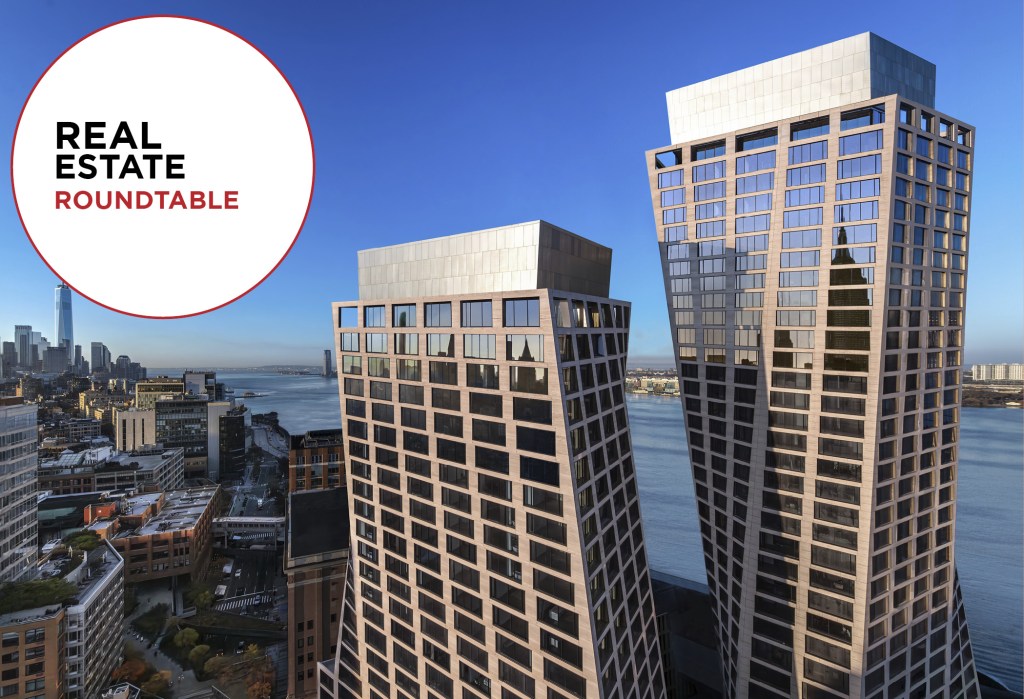East End Seaport Museum: Keepers of Bug Light & Greenport History
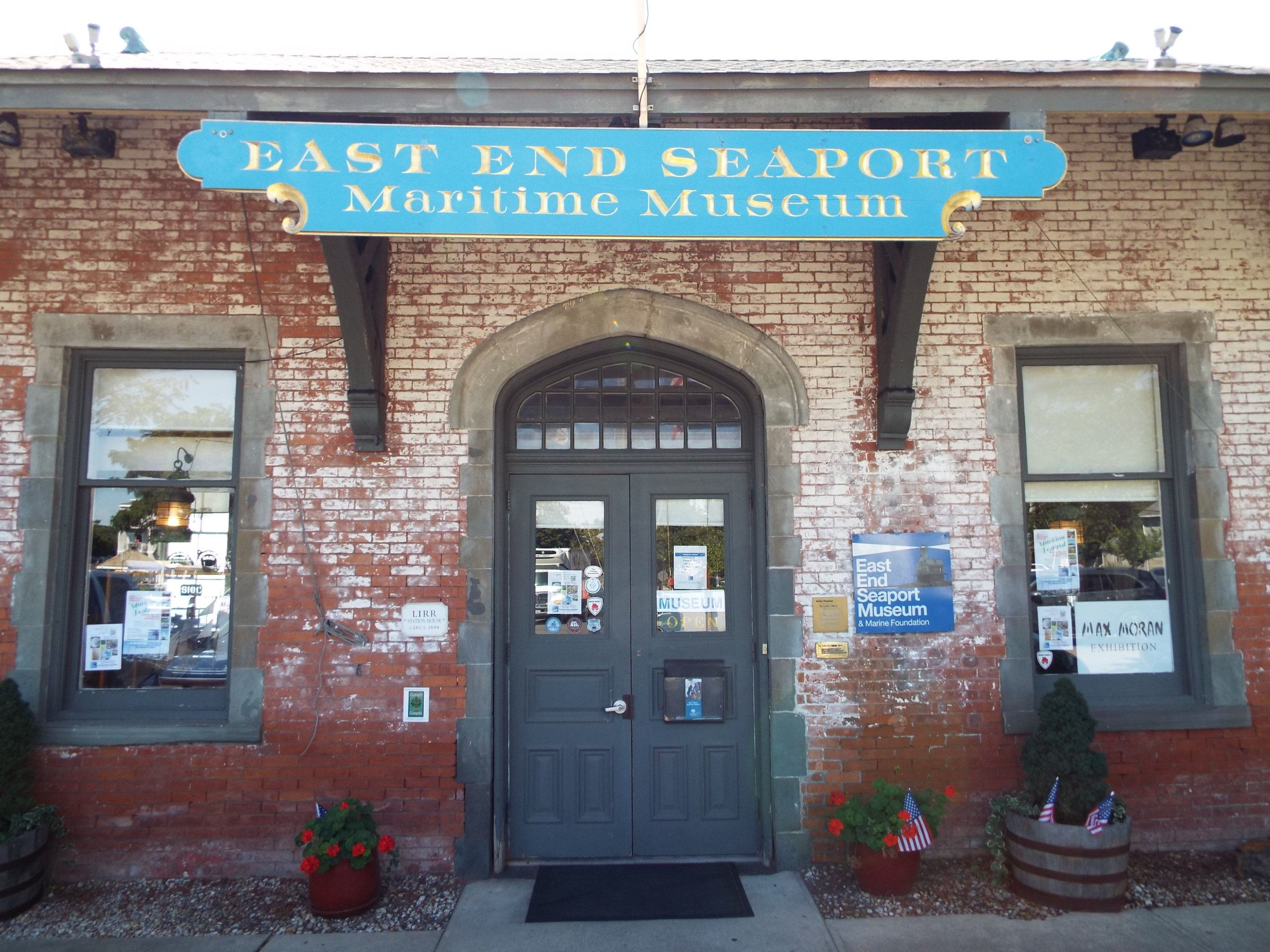
Centrally located at Greenport’s train station, Hampton Jitney stop and Shelter Island ferry loading zone, the East End Seaport Museum is the first stop on many voyagers’ visit to the North Fork fishing village; however, many don’t realize the museum’s significance in the village’s history, its role starring role in the upcoming Maritime Festival or the responsibility it holds in keeping local history alive, both in people’s minds and in a once-destroyed lighthouse off the Long Beach Bar.
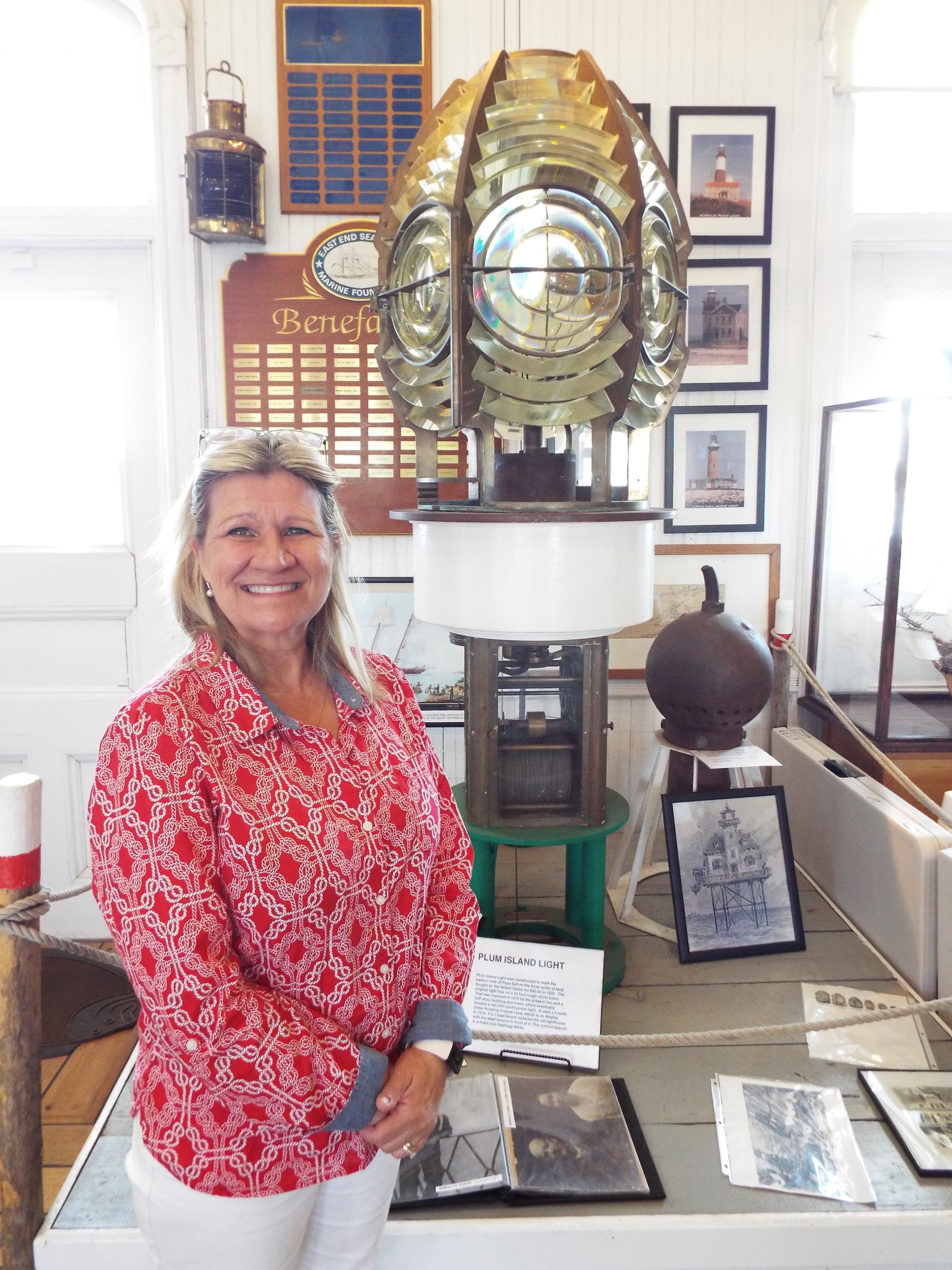
The East End Seaport Museum
With a change in leadership this summer, Interim Director Tracey Orlando hit the ground running. She had served as a volunteer for over 25 years in various capacities, including as secretary of the museum board, when the board decided to assess how she would perform in her first directorial role. Anyone lucky enough to receive a museum tour from her should see just how passionate she is about the museum and Greenport’s history.
“It’s been a blast and it’s been a joy. I really enjoy what we’re doing here, and we’re making a difference,” she says. “We sit in the transportation hub to expose as many visitors to what Greenport is all about — almost like the welcome station (or ambassadors) to the village.”
The museum features new exhibitions every year, each delving into a different aspect of Greenport’s maritime history — from whaling and oystering to World War II fishing fleets.
Some of the fascinating objects on display include the “sword” of a swordfish, a whale tooth scrimshaw, the original fourth order Fresnel lens from the Plum Island Lighthouse and the massive second order Fresnel lens from the Little Gull Island Lighthouse.
And one of the most photographed exhibits is “The Year That Was Knot” by Chris Heyen, a collection of 365 types of knots, one created each day throughout a year of the pandemic.
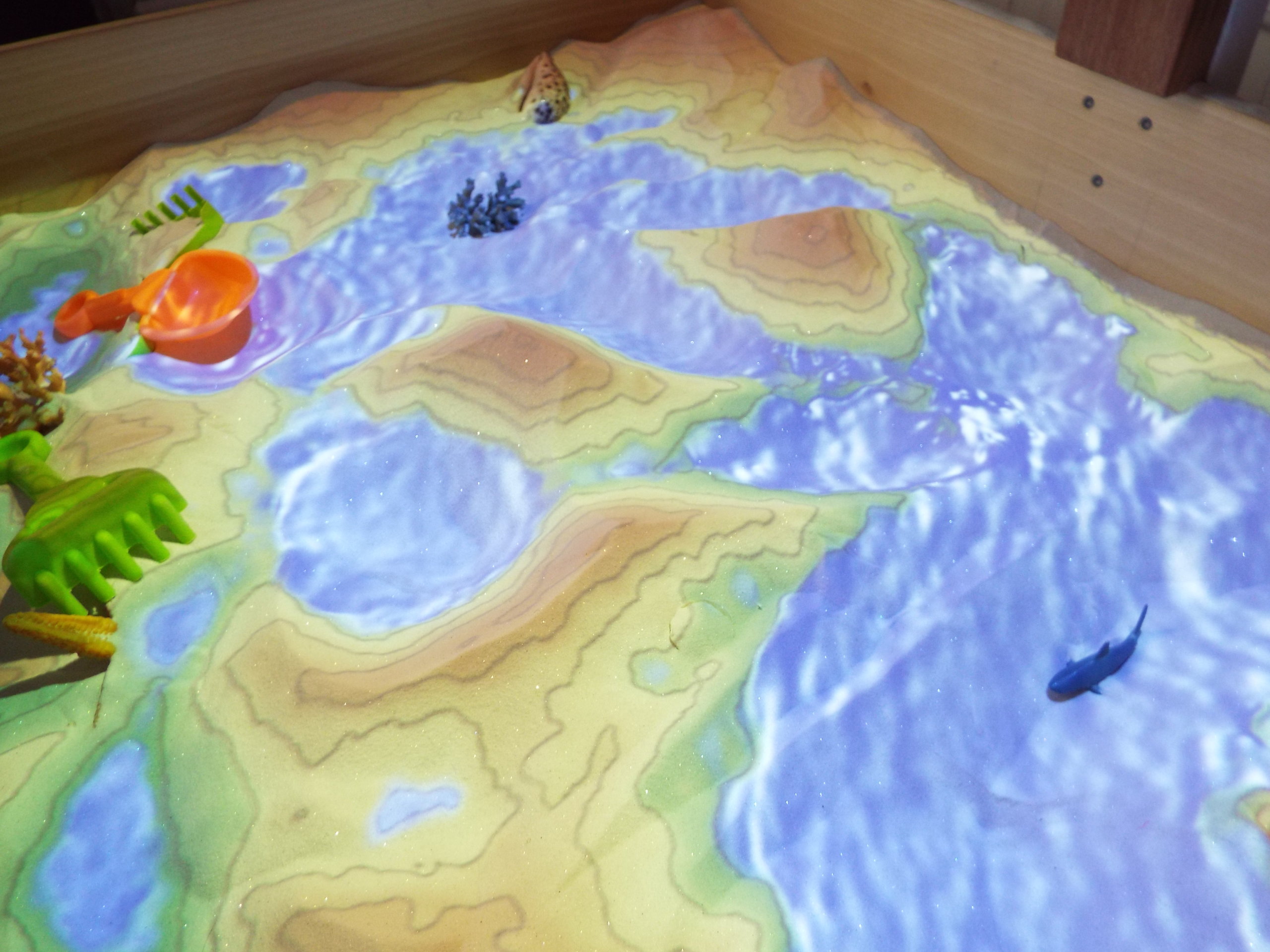
One of the most cutting-edge attractions at the museum is an augmented sandbox designed by 15-year-old Jack McInnis using his old Xbox Kinect, a projector his dad bought for the project and a wooden sandbox donated by a local cabinetmaker. The ingenious setup teaches children (and adults) about topography, allowing them to move the sand to create mountains and valleys or press a button to cause a flood or drought.
“We’re pretty proud that we have this amazing opportunity because a very talented young man gave it to us,” Orlando says, adding that in addition to the children’s room filled with toys and learning devices, the museum also offers scheduled children’s programming and scholarships throughout the year. Adult programming is offered, as well.
One of the museum’s most prized exhibits, dating back to 1989, was their Sea Life exhibit — a 750-gallon, self-circulating saltwater aquarium that once housed exclusively specimens found in local waters and served as an invaluable educational resource for North Fork students. Unfortunately, during the pandemic, the tank sprung a leak, and since the manufacturer no longer exists, it will have to be replaced.
Plans to not only replace but upgrade the system include a chiller to keep the self-circulation system from getting too warm, an iPad to teach children about the sea robins and other specimens in the tank. A $50,000 grant from the Robert D.L. Gardiner Foundation is a major step toward replacing the tank, and only $30,000 more are needed, which Orlando hopes will come via a few corporate sponsors in time to have everything set up by springtime.
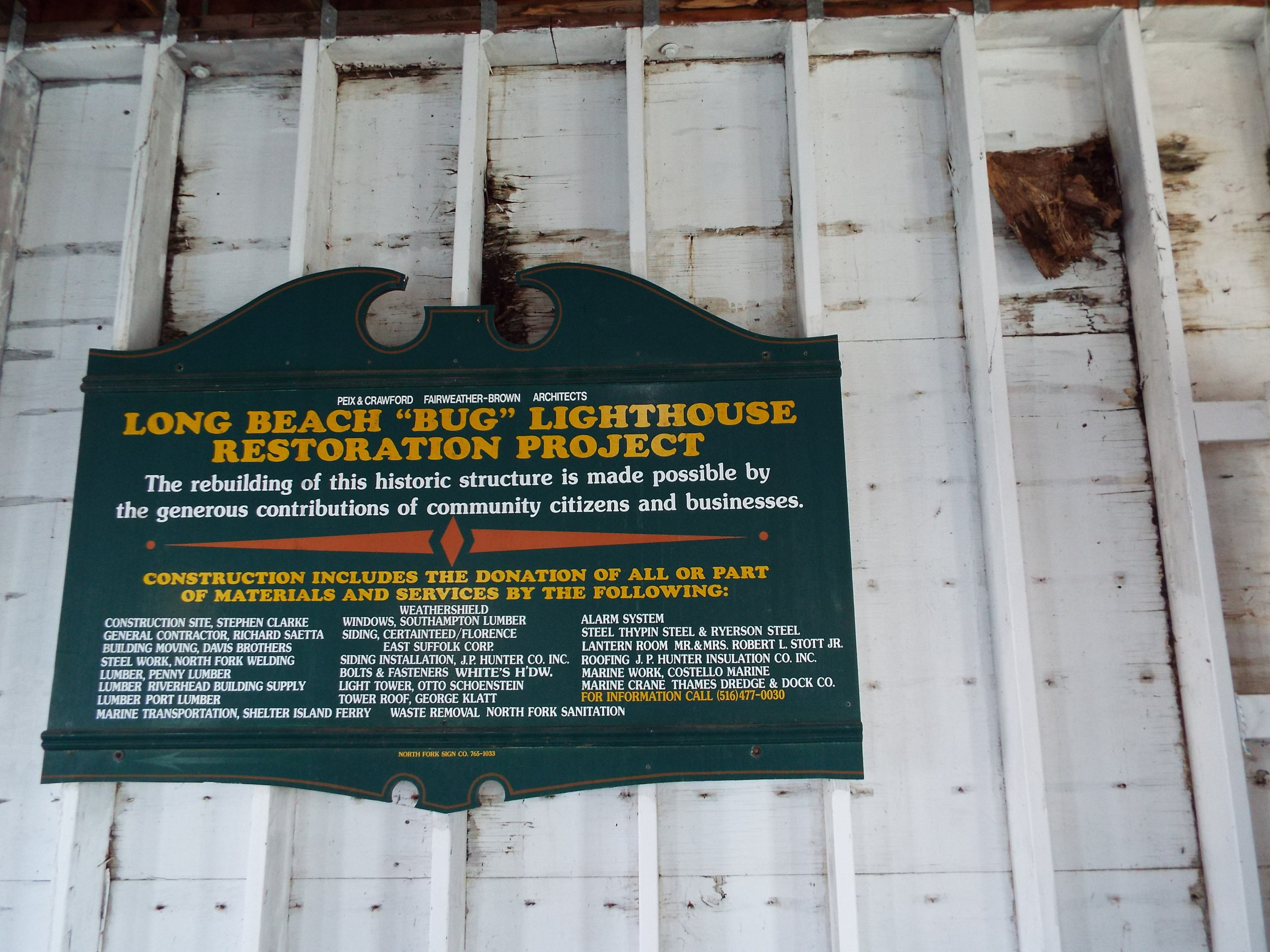
This replacement, while important to the museum and local students, falls outside of the museum’s September relaunch of their capital campaign, which focuses on a vital renovation of the Long Beach Bar Lighthouse aka Bug Light. The Seaport Museum is synonymous with Bug Light due to its weekly cruises to and tours inside of the 19th-century lighthouse (every Saturday through October), as well as its founding history, which is intrinsically tied to Bug Light.
“The bigger picture is: She’s (Bug Light) our mission statement, she’s the only reason we’re here, and that’s why the capital project is so important,” Orlando says. For those unfamiliar with the dramatic tale, here’s a brief history.
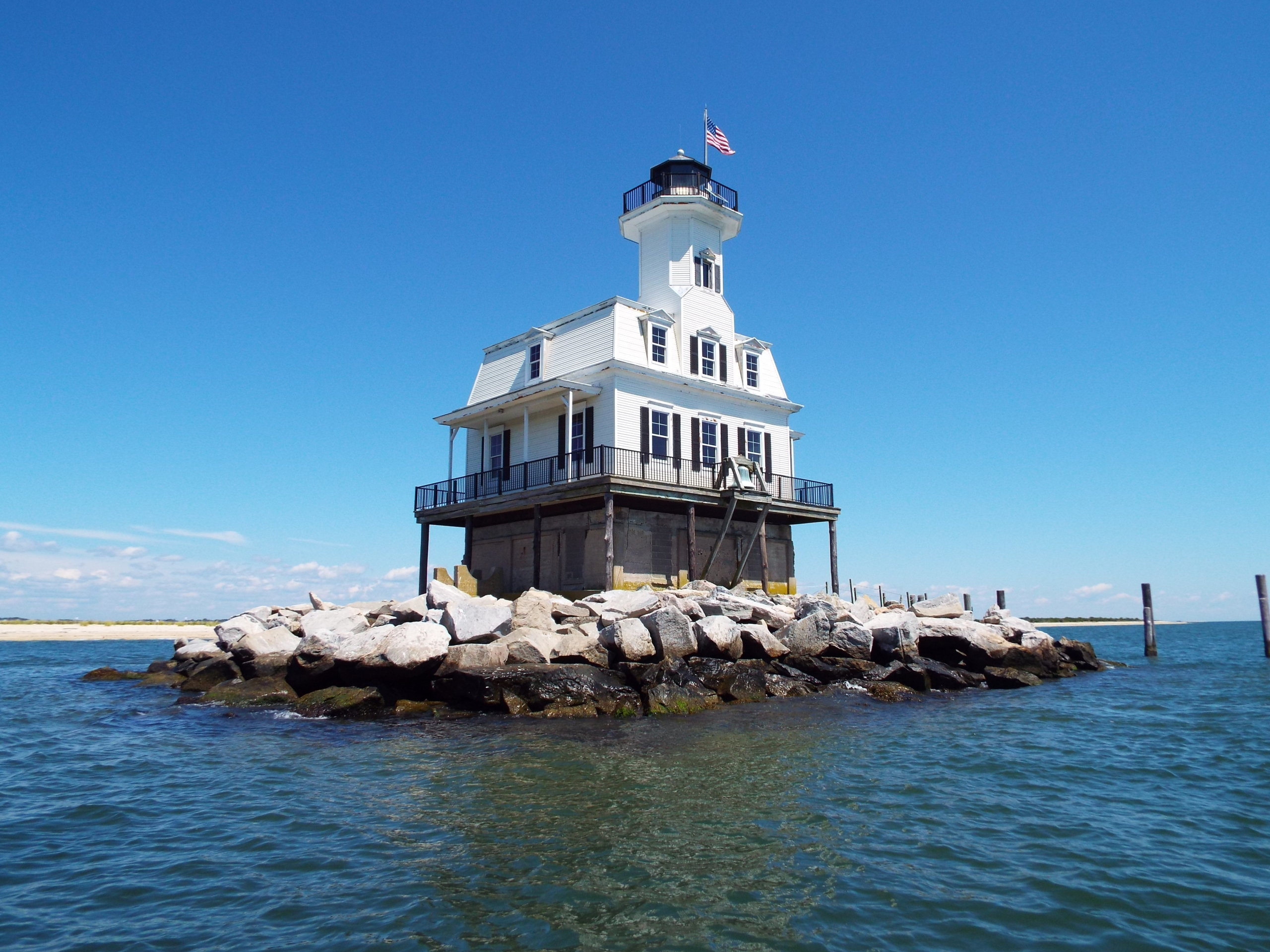
The Lighthouse
Answering an 1869 plea by East End fishermen for the construction of a Long Beach Bar lighthouse, Congress provided $17,000 toward the project and had the Long Beach Bar Lighthouse lit by December 1871. Guiding ships to safe harbor atop its screwpile foundation, many remarked that it looked like a water bug from afar, resulting in its commonly used nickname “Bug Light.” Throughout its years in service, Bug Light housed many lighthouse keepers and assistants who lived there 24/7.
When the infamous Hurricane of 1938 struck the lighthouse, it did considerable damage, compromising the cistern, but leaving the keeper and his son unharmed. The damage was repaired, and the screwpile foundation that gave it its nickname was replaced with a foundation in the style that can be seen today. However, because the hurricane reshaped and extended the sandbar beyond the lighthouse, it was deemed an inefficient channel marker by the U.S. Coast Guard, who decided to decommission it in 1948.
“Locally, you would think that it would hurt us,” says Orlando. “But it didn’t matter to us because we could still see her every time we passed her. We still felt her. She still had a connection to our village and the people that fished here. (She was always) looking after us.”
No longer being used as a government-run navigational tool, the abandoned lighthouse became a hangout spot for local teens. On the July 4, 1963, three teenagers did what even a hurricane couldn’t — they destroyed Bug Light. And all it took was a match. Though their intent is still debated, arson or an unintentional fireworks mishap, the fact of the matter was that the Greenport icon had been burnt down to its foundation.
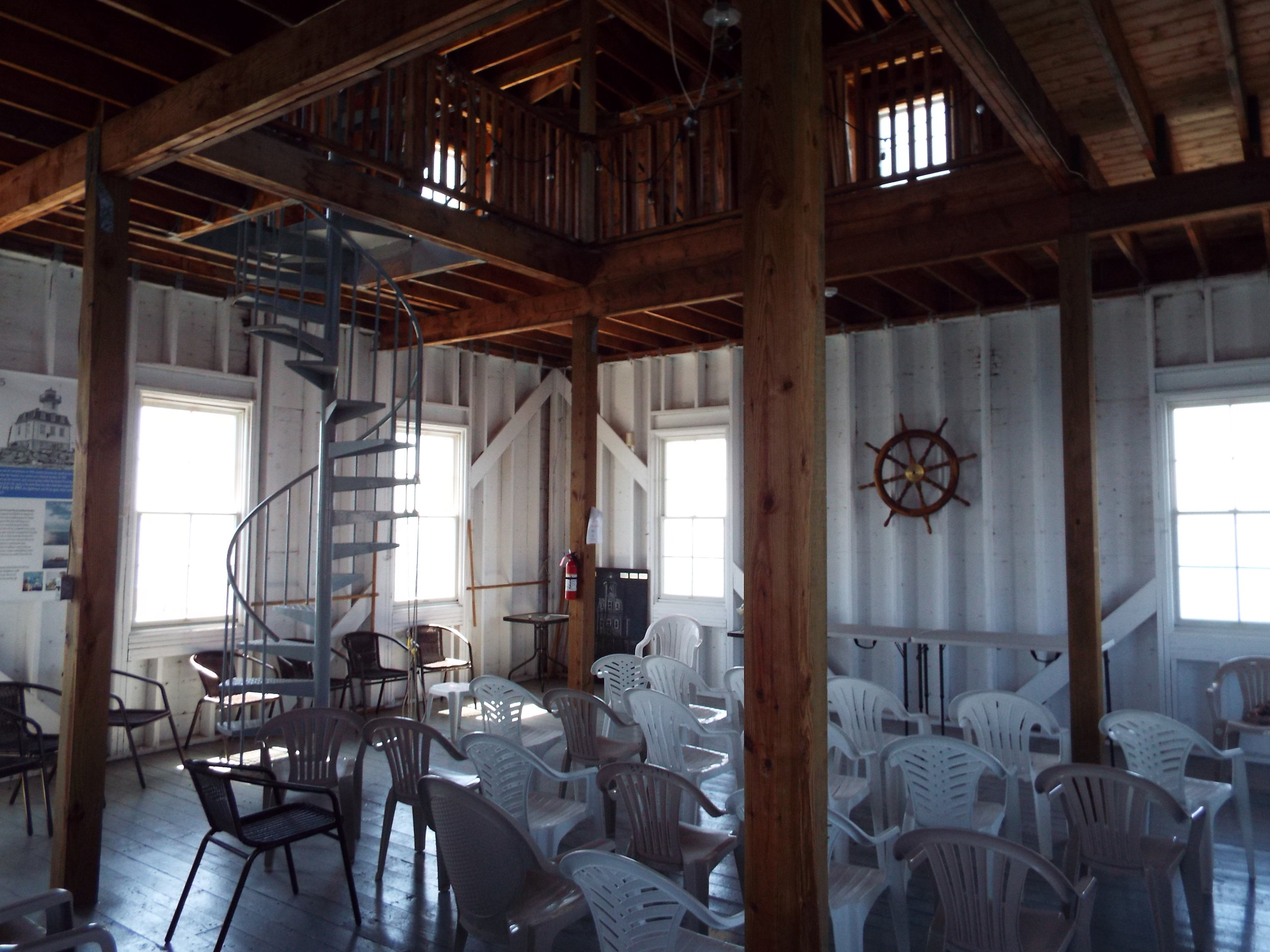
“It broke our hearts. What was the result of that fire was a burnt-out, scarred-up foundation that we all had to look out at and know that she was gone,” Orlando says. “There was always a feeling that she had been stolen from us, and we always talked about how we could put her back in her rightful place. We’re not the government, and back then, we were a small fishing village, we didn’t have the money.”
Two decades went by, and the Greenport families that witnessed the fire or its aftermath couldn’t shake the feeling that an important symbol of their village was missing. Some of these families joined to create the East End Seaport Museum and Marine Foundation in 1989, which, under Merlon Wiggins’ leadership, raised $140,000 toward the goal of creating a working replica of Bug Light. Local experts put their heads together and decided that the best way to do this was to build each floor separately, on land, then carry them via barge to Bug Light’s island to be placed one layer at a time by crane. Within only four hours of assembly, the lighthouse was lit. In 1993, the Coast Guard saw the value of Greenport’s guiding light once more, and recommissioned Bug Light.
“They put her back on charts, and she is truly doing what she was meant to be” Orlando says. “She is a guardian and a navigational aid.”
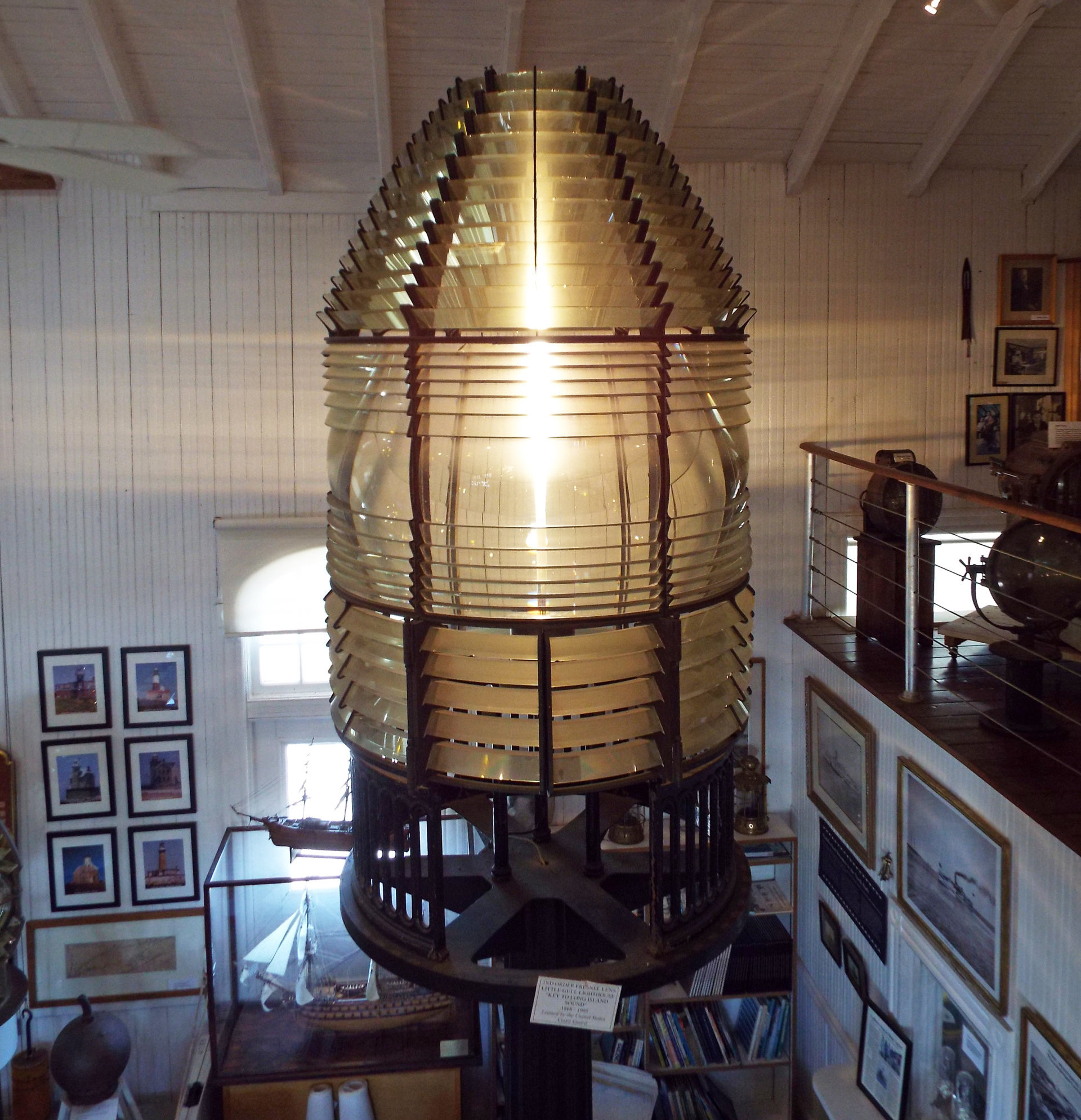
While modern lighthouses’ LED lights require no live-in keepers, the East End Seaport Museum certainly does keep a close eye on Bug Light. There has been only one major repair needed in the 33 years since Bug Light was resurrected, with additional patchwork done last September and this month to mitigate water intrusion. A donation from the. Gardiner Foundation, that was matched by the Seaport Museum, was pivotal in these preservation efforts, but the relaunch of their 2019 capital campaign is vital to more long-term improvements.
“After 33 years, her lipstick is starting to slide. … The closer you get, the more the lipstick is sliding,” Orlando says. “We take very good care of her, but it’s just through time that she’s showing these things.”
One of the main refurbishments needed is a replacement of the vinyl house siding with sturdier composites designed specifically for lighthouses, which should help Bug Light stand for another 70 years or more. If the Seaport Museum can secure the funds (estimated around $1.5 million but not confirmed) and the same team of local tradesmen that rebuilt the lighthouse in 1990, the project is expected to be completed by September 2024.
“She’s (Bug Light) asked nothing of us, and that’s because of the talented people that gave her back to us,” Orlando says. “We’re looking for the same group of guys to get involved again and the same people that were helping us last time with the materials — we think we’re going to put the band back together. It takes a village, and we’re going to need this village once again.”
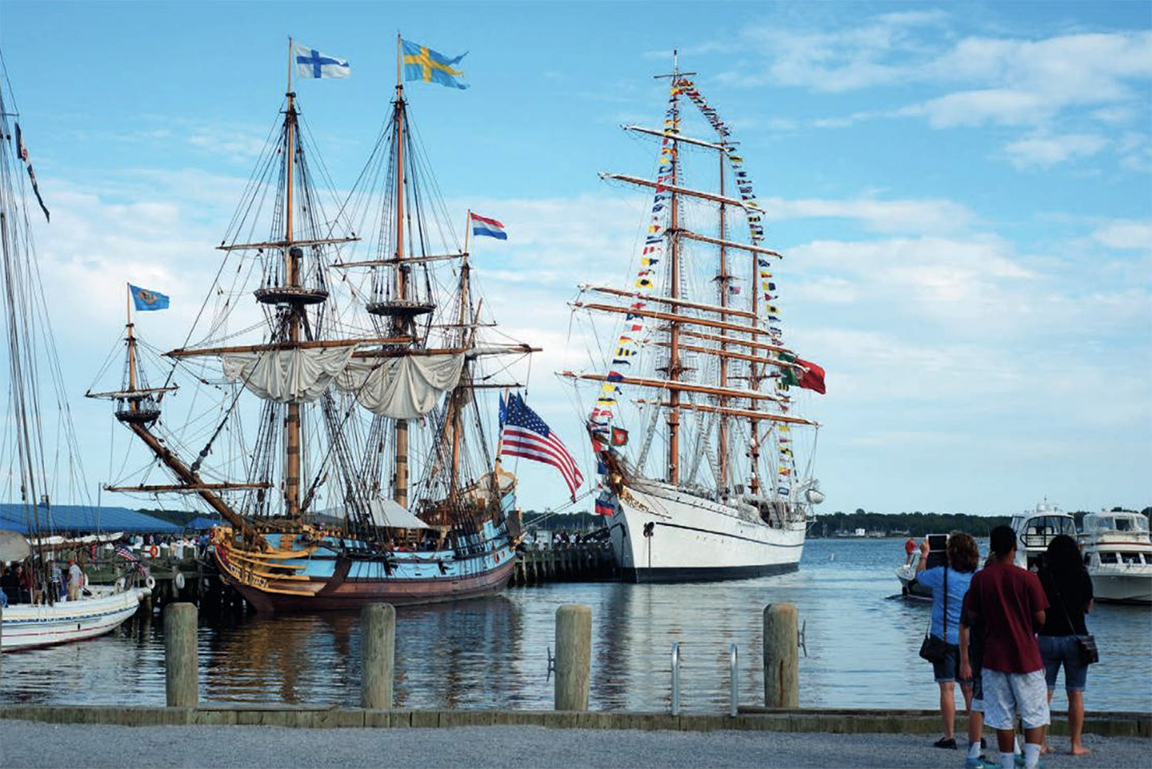
The Festival
The Maritime Festival — which many mistakenly credit to the Village of Greenport or Business Improvement District — is the Seaport Museum’s massive annual event and main source of revenue. This year it kicks off with the exclusive Land & Sea Gala on Friday, August 23, which then leads to the main family event September 24–25.
Those who missed their chance to explore the full-scale replica of the 17th-century Tall Ship of Delaware, Kalmar Nyckel, may be excited to hear that the Tall Ship Amistad will be docked and ready to explore throughout the weekend. The Roving Sea Shanty Singers will perform and educate, classic vessels will be on view along the waterfront, Irish Step Dancers will perform, the U.S. Coast Guard Auxiliary will live music and there will be wine and beer tastings, food trucks and craft vendors, and more.
The Seaport Museum is inviting parade enthusiast to dress up as mermaids, pirates and other maritime characters for the 2022 Merry Merfolk Parade. The parade offers awards for best costume in various categories, and while participation is free, registration is mandatory. The 33rd annual Maritime Festival’s grand marshals are Elizabeth Peeples and Stefanie Bassett, co-owners of Little Ram Oyster Co.
“This year is going to be absolutely thrilling,” Orlando says. “We’re really trying to get back to what our purpose and mission is, and it’s all about maritime history.”
To learn more about the East End Seaport Museum — including the Maritime Festival, capital campaign, memberships and other ways to donate — visit eastendseaport.org.



